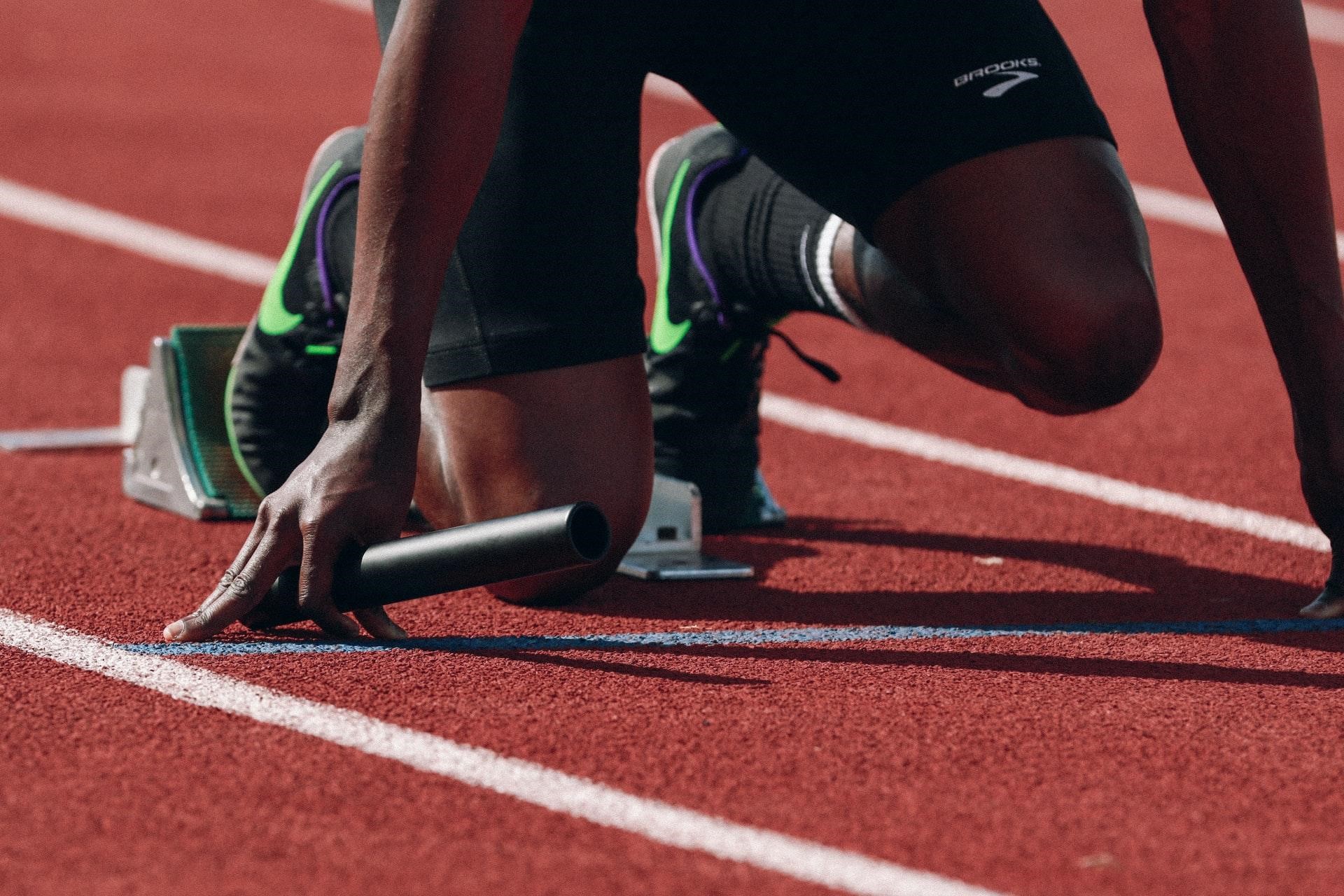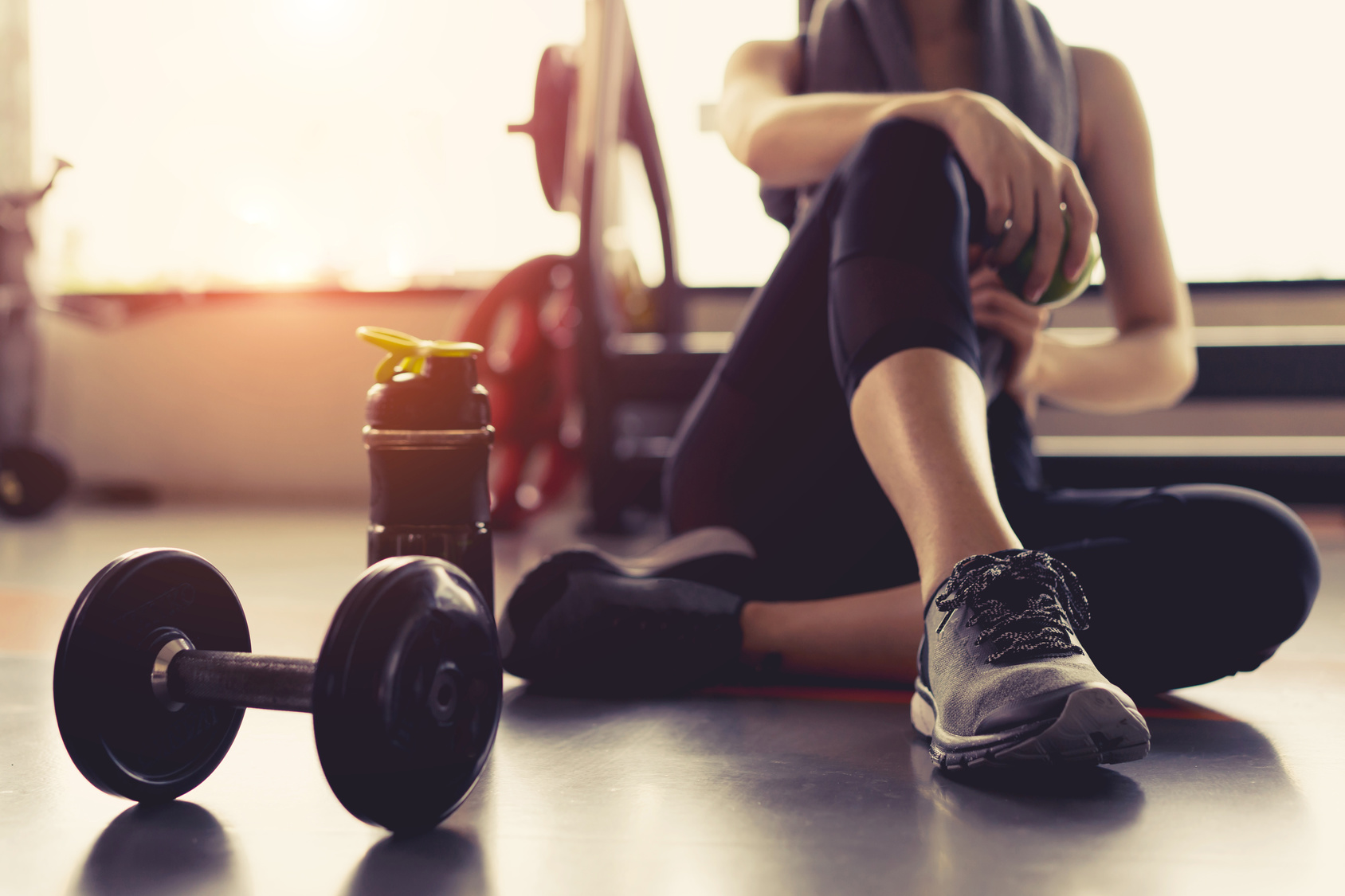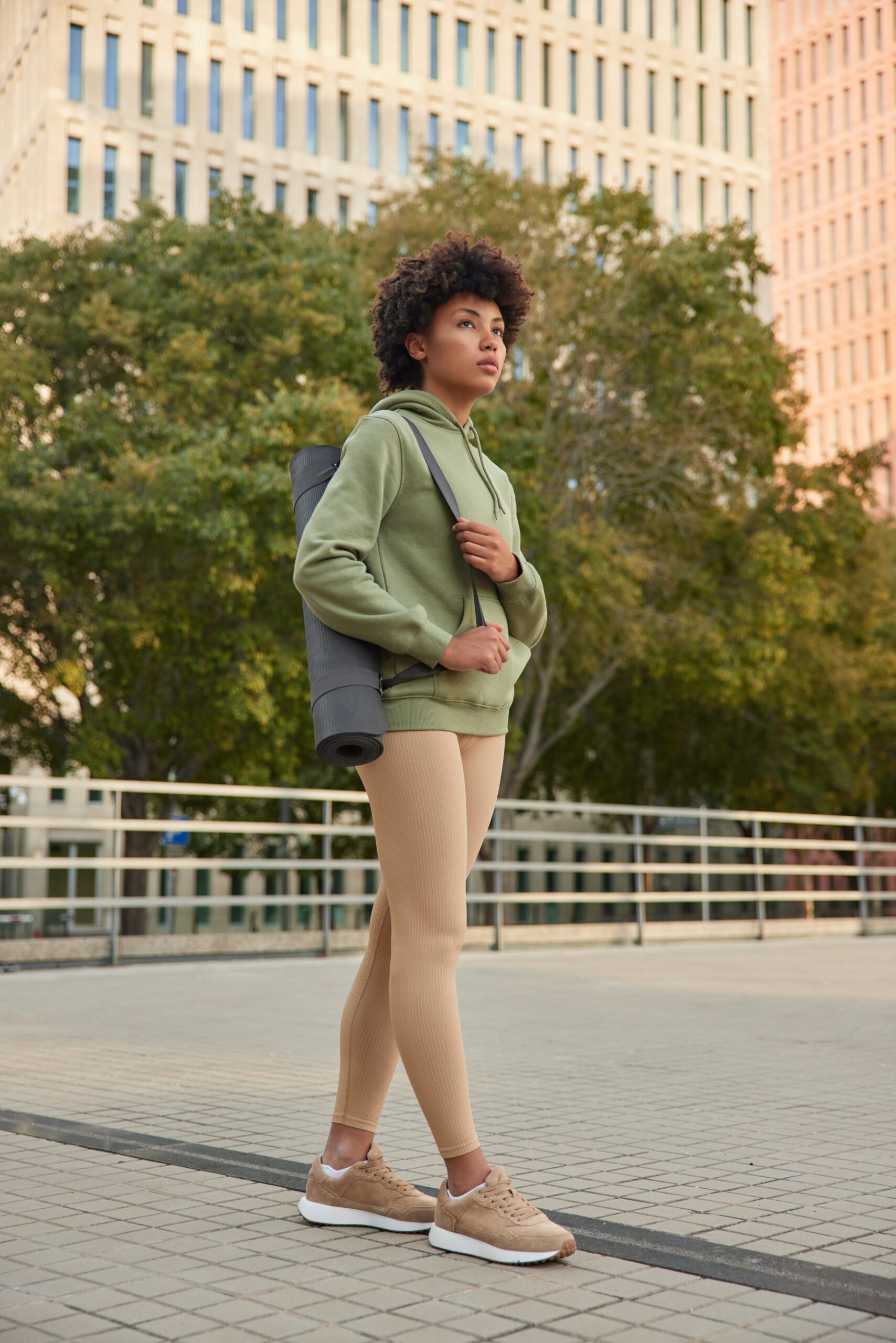Looking for a clean keto food list for beginners? Then my 7-day keto meal guide should get you started on the right foot.
But a little bit about myself first.
If you’ve been following my blog as well as my Pinterest feed over the past few months, you’ll have noticed my increasing obsession with the ketogenic diet.
I tried this fantastic diet last year on a whim, and after a few weeks in, not only that I lost most of the pounds I gained that winter in record timing, but I also felt my best in a long time.
Going high-fat, low-carb was a complete game-changer.
But here’s the tricky part.
Coming up with a delicious, satisfying, yet keto-approved daily menu can be tricky.
It’s in fact, something I struggled with a lot.
I know I’m not alone.
I bet that anyone who tries the keto diet for the first time faces the same challenges—unless they were fortunate.
If you to ensure keto eating success, then you’re in the right place.
In today’s article, I’ll share with you a list of clean a simple 7-day keto eating plan that will put you on the path to success.
Once you finish going through it, you’ll be looking forward to meals, and enjoying what you eat.
But first things first, let’s do a quick recap of the keto diet and what is it all about.
What’s The Ketogenic Diet
The ketogenic diet is a high-fat, low-carb nutrition plan gets you into ketosis: a metabolic state in which your body taps into fat as a primary energy source instead of carbohydrates (glycogen).
But it’s not as simple as it sounds.
Reaching ketosis ain’t easy—and staying in it requires sticking to a daily keto-friendly diet with no more than 20 grams of carbs a day.
That can be quite challenging, especially for a low carb diet newbie.
To make this happen, you’ll need to stick to a diet consisting of lots of healthy fats, moderate protein, and little to no carbs.
Roughly two-thirds of your entire eating plan should come from fats.
Just keep in mind that just before you make the full switch to the ketogenic lifestyle, you’ll experience a set of ketosis symptoms.
You’ll want to plan your meals around healthy oils, eggs, fish, nuts, non-starchy veggies, seeds, and some lower-carb fruits.
Check the complete list here.
Let’s delve deeper into what foods to eat and what to avoid on the keto diet.
Note – Ketosis Is Not Created Equal
Keep in mind that everyone’s body works differently.
You might be able to reach ketosis by eating roughly 30 grams of carbs.
All while, others may need to reduce their carb intake to 10 or fewer grams per day to be successful.
P.S. You can consider a *healthy keto food delivery* first to try out new dishes.
Clean Keto Food List for Beginners
Here’s the list of keto diet food list I promised.
Keto Food Diet List – The Healthy Oils
Oils are a great source of healthy fats—as long as you pick the right ones.
Whether you’re adding them to your salads, cooking with them, or using them for dips, you can’t go wrong with healthy oils.
Healthy fats are great because they make up the base of the keto diet, helping you reach and stay in ketosis.
They’re also super healthy.
For instance, some oils, such as coconut oil and olive oil, have been shown to help in weight loss, reduce blood pressure, and even alleviate symptoms of some common chronic diseases.
Fat is essential to body function, but it can also cause more harm than good if you’re reaching for the wrong type.
I hate to break it to you, but saturated fats, the type found in processed pretzels, potato chips, cookies, and processed foods do not make the cut.
Avoid them at all times.
You also need to cut hydrogenated fats, such as vegetable oils.
Instead, make sure to consume plenty of the following:
- Olive oil
- Avocado oil
- Coconut oil
- Cocoa butter
- Duck fat
- Ghee
- Non-hydrogenated lard
- MCT oil
- Red Palm Oil
- Sesame Oil
- Walnut Oil
- Macadamia oil
- Tallow
- Palm Shortening
Keto Food Diet List -The Dairy Products
Dairy is such an integral part of the keto diet for runners that it gets its own category on the food pyramid.
It’s also a great source of protein and vitamin D.
Most dairy is keto-approved, but make sure to go for full-fat items.
Harder cheeses usually contain fewer carbs.
These are a great source of healthy fats, protein, and calcium.
Remember that some dairy has additional carbs in it, so be careful.
Add the following dairy products to your keto menu:
- Cheese
- Eggs
- Cottage cheese
- Butter
- Heavy whipping cream
- Cream cheese
- Sour cream
- Nut milk
- Plain Greek yogurt
Additional resource – Macros for runners
Keto Food Diet List – The Meats
While lean protein takes drastically less space in a keto eating plan than fats, you’d still need to consume enough of it to ensure cellular functioning.
Quality is key.
When you choose quality, your body will absorb these healthy fats with minimum dire consequences.
I’d recommend that you go for organic, pasture-raised, and grass-fed meats whenever possible.
What’s more?
Consume fattier cuts of meats whenever possible, especially the ribeye, pork belly, etc.
But be warned.
Although meats are some of the best keto foods, too much protein can hamper ketosis, so pay attention to your portions.
Add to cart the following lean protein sources:
- Chicken
- Beef
- Turkey
- Pork
- Lamb
- Venison
- Alligator
- Bison
- Bear
- Deer
- Veal
- Elk
- Duck
- Goat
- Sheep
- Turkey
- Goose
- Wild boar
- Rabbit
- pheasant
- Quail
- Reindeer
- Kangaroo
- Lamb
- Snake (if that’s your thing)
Check the ingredients for the following cured and premade meats
- Sausage
- Hot dogs
- Salami
- Bacon
- Pepperoni
- Deli meat
Additional resource – Can you run a marathon on keto
Keto Food Diet List – The Organ Meats
Usually regarded as a second-grade type of meat in the western world, organ meats have an amazing nutritional profile.
Also known as offal, organ meats are the organs of the animals raised mostly for their meat, eggs, and milk.
The most common types include the heart, kidneys, livers, tongue, brain, tripe, and gizzards.
Organ meat is incredibly nutritious and boasts a host array of health benefits.
These meats used to be a significant part of our ancestor’s diets, providing a substantial nutritional advantage to groups of people who rarely had access to nutrient-dense foods.
It also happens to be super keto-friendly. However, some types contain varying amounts of carbs, so pay attention.
Add to cart the following items:
- Liver
- Heart
- Kidney
- Gizzards
- Bone marrow
- Tripe
- Tongue
Keto Food Diet List – The Seafood
Besides organ meats, seafood might be the most nutrient-dense food you can eat.
Seafood options such as tuna, shrimp, crab, and scallops are low carb options that work very well on the keto diet.
They are also leaner than red meats, boasting less saturated fat and cholesterol.
What’s more?
Seafood is also a great source of healthy fats like omega-3 fatty acids, which are vital for heart and brain health as well as other vital nutrients like protein and selenium.
Try to consume fatty fish, wild-caught, if possible.
Add to cart the following:
- Sardines
- Wild salmon
- Shrimp
- Mackerel
- Tuna crab
- Cod
- Mussels
- Caviar
- Crab
- Abalone
- Shrimp
- Squid
- Lobster
- Clams
- Scallop
- Anchovies
- Oysters
- Haddock
- Bass
- Eel
- Herring
- Flounder
- Rockfish
- Mahi Mahi
- Halibut
- Perch
- Red snapper
- Turbot
- Tilapia
- Grouper
- Sole
Additional resource – Magnesium for runners
Keto Food Diet List – The Vegetables
A great source of vitamins, antioxidants, and fiber, vegetables are the foundation of healthy eating—the ketogenic diet is no exception.
But not all veggies are keto-friendly.
As a rule, starchy, high-carb, choices are off-limits.
These include all veggies grown below ground such as beets, yams, carrots, turnips, sweet and regular potatoes.
Instead, opt for non-starchy veggies.
These score high on vitamins, fiber, minerals, antioxidants, and so much more.
The only non-starchy veggies to avoid are ones that you’re allergic to or those that upset your digestive tract.
Here is the list of veggies listed from the lowest to the high carb content per serving.
- Mushrooms
- Spinach
- Artichokes
- Bok Choy
- Cabbage
- Chicory Greens
- Endives
- Garlic
- Leeks
- Chives
- Cucumber
- Dandelion Greens
- Fennel
- Kohlrabi
- Parsley
- Jicama
- Mustard Greens
- Okra
- Onions
- Cauliflower
- Cabbage
- Kale
- Watercress
- Radicchio
- Scallion
- Swiss Chard
- Turnip Greens
- Pumpkin
- Rhubarb
- Seaweed (all sea vegetables)
- Shallots
- Romaine Lettuce
- Celery
- Brussel sprouts
- Zucchini
- Broccoli
Fermented vegetables
- Sauerkraut
- Kimchi
Additional resource – Keto recipes for low carb eating
Keto Food Diet List – The Fruits
Although fruits pack a lot of nutrients, their carb content makes them a no-no on the keto diet.
You don’t have to give up fruit on the ketogenic diet, but go for lower-carb options, and there is plenty of low-sugar, and thus low carb fruits worth including in your diet.
Some of these options are full choke of antioxidants, help stabilize blood sugar levels, etc.
Also, pay attention to portion sizes to avoid going overboard on carbs.
Add to cart the following:
- Avocadoes (yes, it’s a fruit!)
- Blackberries
- Blueberries
- Strawberries
- Raspberries
- Lemon
- Limes
- Coconut
Additional resource – Vitamin D for runners
Keto Food Diet List – The Drinks
If you’re a coffee addict—just like me—then rest assured that you don’t have to give up your morning expresso on the keto diet.
There’s a thing known as keto coffee.
This tutorial shows you how to make it the right way.
For more taste without the carbs, try blending your coffee with MCT oil or coconut oil.
My best recommendation is to keep it simple and stick to mostly water.
You can add some flavor if you want to with lemon/lime juice or stevia-based flavorings.
Add to cart the following drinks to your diet:
- Unsweetened Coffee
- Keto coffee
- Almond coffee
- Broth (vegetables, chicken, beef, bone)
- Herbal Teas
- Sparkling Mineral Water
- Water
- Coconut Milk
- Seltzer Water
Keto Food Diet List – The Nuts and Seeds
Nuts and seeds are a fantastic source of healthy fats and protein on the keto diet.
They’re also great for a snack on the go as well as a tasty and crunchy addition to any meal, especially salads.
Stick to fattier nuts like almonds and macadamias.
Roast them to get the most out of them.
Be careful of their calorie content.
They can rack up quite fast.
If you’re trying to lose weight, too much of the stuff may derail and compromise your efforts.
These also may contain various amounts of carbs so watch out.
I hate to break it to you, but peanuts are not from this family.
They’re legumes and should be avoided on the keto diet.
Grab the following at the store:
- Almonds
- Macadamia nuts
- Hazelnuts
- Pistachios
- Pecans
- Pumpkin seeds
- Cashews
- Walnuts
- Sesame seeds
- Pine nuts
- Sunflower seeds
- Psyllium seeds
- Chia seeds
- Walnuts
- Hemp seed
Keto Food Diet List – Keto-Friendly Condiments
Finding ketogenic approved condiments for some extra flavor can be tricky.
Not all condiments make the keto cut.
BBQ sauce, ketchup, and many salad dressings have lots of extra sugar.
So pay attention to labels and choose sugar-free options.
Or, better yet, make your own low-carb condiments.
Add some flavor to your meals using the following:
- Olive oil mayonnaise
- Unsweetened ketchup
- Mustard
- Oil-based salad dressings
- Vinegar
- Salsa
- Mao
- Guacamole
- Aioli
- Hot sauce
- Sugar-free dry rubs
Additional resource – Best sources of electrolytes for runners
The 7-Day Keto Meal Plan
What follows is a simple 7-day keto meal plan that’s ideal for keto beginners.
The plan has 21 keto recipes—breakfast, lunch, and dinner every day for one week.
It also contains some of my favorite easy-to-make low-carb recipes that deliver delicious and satisfying eats.
This eating plan should provide a complete guide for beginners who want to try this way of eating.
I hope it delivers on its promise.
Otherwise, I’m failing both of us.
Additional resource – Salt tablets for runners
Keto Meal Plan – Day 1
Breakfast – Fat Coffee
Keto coffee is one of the best keto-friendly drinks out there, and the perfect way to start the day if you need that morning jolt, just like the rest of us.
The drink provides plenty of fuel and a great sated feeling while being frothy and delicious.
Not to mention that it’s healthier than your average Starbucks macchiato.
What’s more?
Keto coffee is easy to make.
Take good quality coffee, pour it into a large container, then blend it with grass-fed butter, coconut oil and a bit of stevia.
Still confused?
Watch this tutorial.
Ingredients
- Coffee freshly brewed
- Grass-fed and unsalted butter
- MCT oil or coconut oil
- Heavy cream
- Stevia, vanilla extra, or any other non-sugar flavor of your choice.
Lunch: Keto Spinach Salad
I love spinach.
This superfood, calorie for calorie, provides more nutrients than any other food, according to the World’s Healthiest Foods.
Keto spinach salad is the perfect low-carb lunch option or light dinner.
It’s flavorful, fresh, and full of nutrients.
It’s also sweet, crunchy, creamy, and tangy.
It also comes together quickly in less than 30 minutes.
Just wow.
What’s more?
You can also easily customize this spinach salad, adding more or less spinach—as well as other ingredients—depending on what you like.
For more taste, feel free to top it with eggs and bacon and toss it with a red wine vinaigrette, or some romaine lettuce.
Ingredients
- Spinach
- Chicken thigh
- Hardboiled eggs
- avocado
- Olive oil
- Grated cheese
- Curry powder
- Salt and pepper.
Dinner – Keto Pizza
If you crave pizza on the low-carb diet, the following recipe will get you covered.
There are many pizza keto-friendly recipes out there.
The keto version is made from cheese, protein powder, meat, cauliflower, and most importantly, almond flour.
The recipe yields the perfect thin crust pizza chew.
It has everything you want in a regular pizza—cheese, peppercorn, tomatoes sauce—minus the carbs.
The recipe also comes together in less than 20 minutes.
Ingredients
- Eggs
- Mozzarella cheese
- Cream cheese
- Almond flour
- Baking powder
- Unsweetened tomato sauce
- Dried oregano
- Olives
- sea salt and ground black pepper
Additional resource – How to eat less sugar
Keto Meal Plan – Day 2
Breakfast: Sausage Breakfast Sandwich
If you want something to help you get over your breakfast sandwich obsession—something I had to deal with myself—then the following recipe is exactly what you need.
I consider this low carb sausage sandwich the ultimate keto breakfast for people who crave taste in the early morning.
It’s also low in carbs and high in healthy fats and nutrients.
What’s more?
The mix of juicy patties, keto-friendly almond flour, eggs, and melted cheddar cheese is the healthiest alternative to a McDonalds.
You can also freeze and reheat in the microwave for an on-the-go, but deliciously satisfying breakfast, or any other meal of the day.
Ingredients
- Eggs
- Sausage patties
- Heavy cream
- Butter
- Cheddar cheese
- Avocado
- Salt and pepper
Lunch – Tuna Salad Lettuce
It won’t take you a long time to make a mouthwatering meal when you have got a lot of delicious and simple ingredients on hand.
Don’t you believe me?
This tuna salad is proof.
The following recipe makes a fantastic keto tuna salad in less than 10 minutes with accessible ingredients.
It’s ideal as a post-workout snack or for on-the-go low carb lunch.
With a few simple ingredients, you can throw together a satisfying lunch, no cooking required.
It’s also easy to make.
Mix tuna, celery, mayonnaise, red onion, lime juice, and the rest of the ingredients in a bowl.
Toss in some tomatoes to brighten the plate.
So tasty.
So simple.
So keto.
Ingredients
- Can of tuna
- Hard-boiled eggs
- Romaine lettuce
- Mayonnaise
- Lemon juiced
- Diced onions
- Sea salt and pepper, to taste.
Additional resource – Diet mistakes runners make
Dinner – Keto Chicken Garam Masala
A fan of Indian cuisine?
This one is for you.
The following low-carb recipe got plenty of pieces of chicken in a rich, creamy sauce, tomato paste, and lots of spices.
Add in some sweet bell peppers, coconut cream, and chicken, and you’ll want to have this dish over and over again.
Don’t freak out when you check the ingredient list.
Sure, it’s a bit lengthy, but it takes just 15 minutes to throw everything together.
Ingredients:
- Chicken breast
- Butter or ghee
- ground cumin
- Ground coriander seed
- Yellow onion
- Ground cardamom
- Ground turmeric
- Coriander
- Paprika
- Chili powder
- Red bell pepper
- Coconut cream or heavy whipping cream
- Nutmeg
- Tomato paste
- Finely chopped cilantro
- Sea salt and pepper
Keto Meal Plan – Day 3
Breakfast – Egg Omelet with Cheese, Spinach, and Sausage
Eggs are nutrient-dense, healthy, and one of the keto-friendliest foods around.
That’s why they are an integral part of most low-carb diets.
The following recipe is one of the best keto dish made with fatty ingredient.
Feel free to use plenty of butter, cheese, oil, egg yolks, and low carb veggies.
You can also add a small portion of fatty meats.
I recommend sausage.
Ingredients
- Eggs
- Spinach leaves
- Breakfast sausage
- Feta cheese
- Fresh Dill
- butter
- Olive oil
- Leafy greens
- Sea salt and pepper
Lunch—Keto Chicken BLT Salad
I was never a big fan of salads.
But once I resolved to eat healthier, I couldn’t avoid them anymore.
So I had to find recipes that I like and that work for me.
The keto check BLT salad is an excellent example.
The following recipe is one of my favorite salads out there.
You can easily throw together this salad either with leftover chicken, rotisseries or even canned chick if you’re pressed for time.
Ingredients
- Boneless chicken thighs
- Cheery tomatoes
- Butter
- Bacon
- Avocado
- Mayonnaise
- Romaine lettuce (for wrapping)
- Celery seasoning
- Sea salt and pepper.
Dinner – Bacon Cheese Balls
If you don’t love eating cheese balls stuffed with bacon—one of the most delicious meats known to man—then there’s something wrong with your taste buds.
These bacon cheese balls are easy to make ahead and are ideal for parties and other social gatherings.
What’s more?
These balls are typically served at room temperature, so don’t worry about keeping them warm.
Ingredients
- Bacon
- Cheddar cheese
- Pecans
- Cream cheese
- Green onion
- Garlic powder
- Butter, at room temperature
- Dried parsley
- Poppy seeds
- Onion powder
- Driven chives
- Chili flakes
- Sea salt and pepper
Keto Meal Plan – Day 4
Breakfast – Keto Egg Muffins
When you’re leading a busy life, you’d, sooner or later—need something quick to grab while running out of the door.
Finding keto-approved snacks can be quite challenging—but the following recipe should keep you covered.
These muffins are perfect for keeping on hand in your fridge or freezing through the week.
This also makes ideal to make-ahead on your meal prep day if you’re into that.
Pop on in the microwave for 30 seconds when you’re ready to serve.
Ingredients
- Eggs
- Shredded cheese
- Spinach
- Scallions
- Mushrooms
- MCT oil powder
- Red pesto
- Salt and pepper
Lunch – Keto cheeseburger
Don’t let low-carb lifestyle eating stand in your way of enjoying a good burger.
These keto burgers are not only delicious but with none of the carbs and sugars to spike your blood sugar levels and kick you out of ketosis.
Try this recipe, and you’ll enjoy a burger that tastes just like the real one and even adds it to your keto meal plan without worrying about your macros.
Ingredients
- Ground beef
- Clove garlic
- Onion powder
- Apple cider vinegar
- Black pepper
- Tomatoes
- Scallions
- Avocado
- Olive oil
- Sea salt and pepper
- Fresh cilantro
Dinner – Baked Salmon with asparagus
Salmon is one of my favorite fish.
It’s a fish you could eat every day, has a lot of nutrients but a low mercury choice, unlike tuna or swordfish.
Although it may appear as if you spent endless hours in the kitchen, making this dish is relatively straightforward.
The following recipe only requires three simple ingredients: salmon, asparagus, and butter.
You can transform the recipe into a delicious dinner in just 20 minutes.
It’s not only keto-friendly but also super delicious.
For more flavor, add some lemon juice, chopped garlic, or sauce of butter.
Ingredients
- Salmon fillets
- Green asparagus
- Butter
- Garlic Cloves
- Lemon juice and zest
- Sea salt and pepper.
Keto Meal Plan – Day 5
Breakfast – Bacon, and Eggs
Fried eggs and bacon may not seem like much, but they’re full of healthy fats and lean protein that will keep you satisfied all morning without kicking you out of ketosis.
If you’re bored with the classic combo, then the following recipe will help you take it to an entirely new level.
The secret to making great eggs is never overcooking them and always adding more richness to them.
Ingredients
- Eggs
- Bacon
- Butter
- Heavy whipping cream
- Avocado
- Green bell pepper
- Walnuts
- Sea salt and pepper
Lunch – Keto Smoked Salmon & Avocado
This dish combines two of my favorite foods: salmon and avocado.
The recipe yields a high-fat, high-fiber salad that will keep you energized for hours thanks to the avocado and salmon.
What’s more?
The dish is loaded with omega-3 fatty acids and can be prepared in under 15 minutes.
After all, life on the keto diet doesn’t have to be complicated.
Ingredients
- Smoked salmon
- Avocadoes
- Mayonnaise or sour cream
- Lemon juice
- Sea salt and pepper
Dinner – Ground Beef Tacos
Ground beef is a keto-friendly and relatively inexpensive form of meat. That’s why I ‘m adding this recipe to the list.
The recipe comes together quickly, so it’s ideal for busy weeknight keto dinners.
Simply cook up some ground beef and use romaine for sheets.
For more texture, throw in some cheese and sour cream, and you’ll never crave tortillas.
Remember to use cheddar cheese shell instead of the high-carb proceed corn taco shells found at the grocery store.
Ingredients
- Cheese taco shells—or your low-carb favorites
- Lean ground beef
- Low carb taco seasoning
- Tomato Paste
- Sea salt and pepper
- Shredded cheddar cheese
Keto Meal Plan – Day 6
Breakfast – Sausage and Egg Breakfast Bowl
If you’re craving a high-protein breakfast that’s still keto-friendly and easy to make, look no further than sausage and egg breakfast bowl.
I love the following recipe because it’s fun to make and I get to enjoy a bunch of different foods in one go.
It’s also simple and easy to throw together without throwing your keto efforts out of whack.
Since you’ll be cooking the eggs separately, you can fry them up exactly the way you love the most.
Ingredients
- Sausage
- Whole eggs
- radishes
- Cheddar cheese
- butter
- Sea salt and pepper
Lunch – Leftover Turkey Salad
The following recipe is a fantastic way to use those lunch leftovers.
The dish can also be ready to serve in a few minutes since you’re using pre-cooked ingredients.
Chop up the ingredients into small pieces and mix them all.
Feel free to add more taste with some keto veggie crusts.
Ingredients
- Cooked turkey meat
- Avocado
- Cream cheese
- lettuce
- Stalk celery
- Olive oil
- Onion
- Mayonnaise
- Sea salt and pepper.
Dinner – Chicken Bacon Ranch Casserole
If you love eating chicken pasta casserole, but no longer can have it because of the pasta, then the following casserole recipe is something you could enjoy.
Instead of the carb-rich noodles usually used, you’ll substitute the noodles with cauliflower.
This low carb recipe is pretty great—extra fat from the bacon and cheese, enough protein to keep you satisfied, and super low in carbs.
For more taste, you can also get a bit creative and toss in a few other veggies too.
Feel free to use squash, zucchini, turnips, or even radishes.
Ingredients
- Bacon
- Boneless, skinless, chicken breasts
- Ranch seasoning
- Chives
- Salt and pepper
Keto Meal Plan – Day 7
Breakfast – Keto Blueberries Pancakes
The following recipe makes delicious pancakes without traditional flavors and sugars.
It’s made with the ideal mix of coconut flour, almond flour, eggs, and blueberries for a meal that’s so delicious and fluffy that you’ll be hardpressed to believe they’re low carb.
The blueberries—one of the few keto-friendly fruits out here—adds a touch of sweetness but they also have some sugar so pay attention to the portions.
Ingredients
- Eggs
- Cream cheese
- Fresh blueberries
- Melted butter
- Almond flour
- Oat fiber
- Baking powder
- Sea salt and pepper
Lunch – Bacon Spinach Frittata
Tired of making omelets?
Try the following frittata recipes that make a dish full of greens, leafy veggies, and bacon.
It may seem complicated, but the recipe is fantastically simple to make. Combine eggs, spinach, bacon or sausage, and veggies into a mouth-watering feast for the tummy.
For more flavor, feel free to top it with a scoop of ghee or guacamole for a mouth-watering meal.
Ingredients
- Eggs
- Diced bacon
- Butter
- Fresh spinach
- Whipping cream
- Grass-fed ghee
- Shredded cheese
- Rosemary sprig
- Sea salt and pepper
Dinner—Slow cooker Mexican Tacos
Unlike your typical high-carb Mexican feasts, the following slow cooker Mexican shredded because of the keto-friendly ingredients that won’t spike your blood sugar levels nor kick you out of ketosis.
The recipe takes roughly 30 minutes to be thrown together and pre this impressive dish.
You can serve it with lettuce wraps or classic low-carb tacos or combine it with roasted veggies or cauliflower rice.
Ingredients
- Pastured beef short rips or beef shank
- Cilantro
- Ground turmeric
- ground cumin
- Ground coriander
- Garlic Cloves
- Chipotle powder
- Diced onions
- Jalapenos
- Garlic powder
- Smoked paprika
- Sea salt and pepper
- Water
Clean keto food list for beginners – The Conclusion
There you have it.
The above clean keto food list for beginners is all you need to get started on the low carb path and ensure success in the process.
You need to show up, get the ingredients, and start cooking.
The rest is just detail.
Thank you for dropping by.
Please feel free to leave your comments and keto meal recipe ideas in the section below.
In the meantime, keep eating healthy.
Cheers.
David D.














